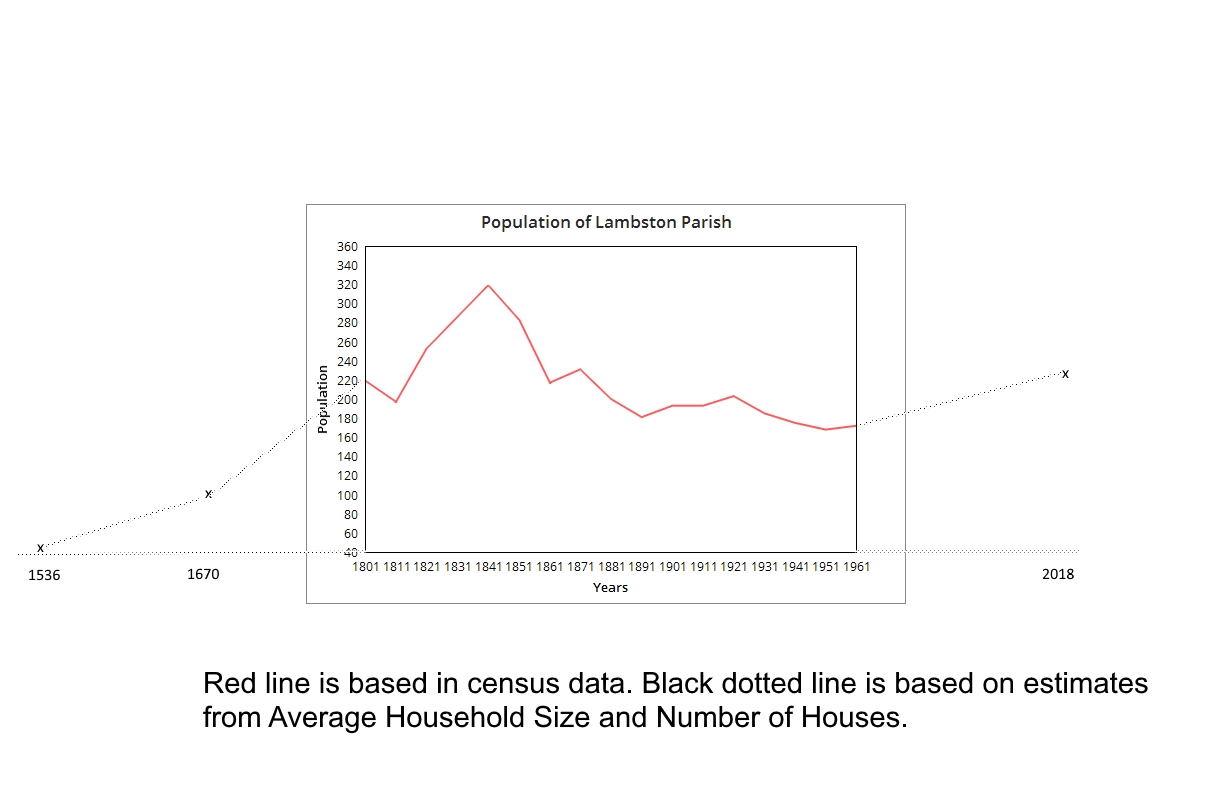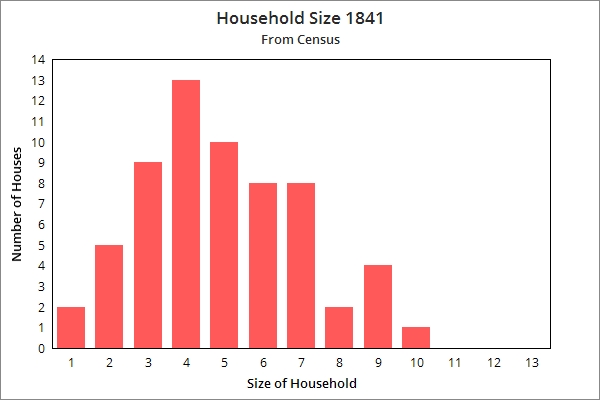Why choose 1840 ?
It is the time when the tithe map was made and this gives us the earliest detailed map of the whole parish that I have been able to find. The map also comes with a list of every field, its name, land use, occupier and landowner. So we have a really good accurate record of land use for about 175 years ago. 1841 was also the first census where the names of residents were recorded.

1841 Census
That first census recorded a population of 320 in 63 dwellings, a pretty even mix of male and female with all but 5 being born in Pembrokeshire. Of those where jobs are given there are 19 farmers, 27 agricultural labourers,1 miller, one smith, 2 carpenters, 22 female servants, 10 male servants (Both mainly on farms), one navy pensioner and 7 listed as of independent means.
It is important to stress that landownership and farming were much more central than they are today. The census figures of the time show that about 5 in every 6 men of working age were engaged in agriculture. So where today only a tiny proportion of people were directly involved in local farming, then nearly everyone was.
Population
The mid-nineteenth century saw a movement from rural areas of west Wales to the industrial south east. This is reflected in the Lambston population. In 1841 the population of Lambston peaked at 320 almost a third higher than it had been at the start of the century. By the end of the century the population of the parish was down below 200 and by 1961 it was 172. So Lambston probably had its greatest population in the 1840s. Even today, with all the new houses in Portfield Gate, the population is probably no more than 250. Oddly, because the Lambston parish unit no longer exists, we have less information today than for 1841.
Household Size
The household size figures for the parish in 1841 are interesting. Some of the larger numbers in the households include servants so this does not always represent family size.
L

